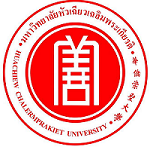Please use this identifier to cite or link to this item:
https://has.hcu.ac.th/jspui/handle/123456789/4055Full metadata record
| DC Field | Value | Language |
|---|---|---|
| dc.contributor.author | Supanee Chounchay | - |
| dc.contributor.author | Stephen C Noctor | - |
| dc.contributor.author | Nuanchan Chutabhakdiku | - |
| dc.contributor.author | สุภาณี ชวนเชย | - |
| dc.contributor.author | นวลจันทร์ จุฑาภักดีกุล | - |
| dc.contributor.other | Huachiew Chalermprakiet University. Faculty of Physical Therapy | en |
| dc.contributor.other | University of California. Department of Psychiatry and Behavioral Sciences | en |
| dc.contributor.other | Mahidol University. Institute of Molecular Biosciences | en |
| dc.date.accessioned | 2025-06-21T04:34:36Z | - |
| dc.date.available | 2025-06-21T04:34:36Z | - |
| dc.date.issued | 2020 | - |
| dc.identifier.citation | EXCLI J 2020 Jul 3;19:950–961 | en |
| dc.identifier.other | doi: 10.17179/excli2020-2249 | - |
| dc.identifier.uri | https://has.hcu.ac.th/jspui/handle/123456789/4055 | - |
| dc.description | สามารถเข้าถึงบทความฉบับเต็ม (Full text) ได้ที่ : https://pmc.ncbi.nlm.nih.gov/articles/PMC7415932/ | en |
| dc.description.abstract | Microglial cells are the primary immune cells in the central nervous system. In the mature brain, microglia perform functions that include eliminating pathogens and clearing dead/dying cells and cellular debris through phagocytosis. In the immature brain, microglia perform functions that include synapse development and the regulation of cell production through extensive contact with and phagocytosis of neural progenitor cells (NPCs). However, the functional role of microglia in the proliferation and differentiation of NPCs under hypoxic-ischemic (HI) injury is not clear. Here, we tested the hypothesis that microglia enhance NPCs proliferation following HI insult. Primary NPCs cultures were divided into four treatment groups: 1) normoxic NPCs (NN); 2) normoxic NPCs cocultured with microglia (NN+M); 3) hypoxic NPCs (HN); and 4) hypoxic NPCs cocultured with microglia (HN+M). Hypoxic-ischemic injury was induced by pretreatment of the cell cultures with 100 µM deferoxamine mesylate (DFO). NPCs treated with 100 µM DFO (HN groups) for 24 hours had significantly increased expression of hypoxia-inducible factor 1 alpha (HIF-1α), a marker of hypoxic cells. Cell number, protein expression, mitosis, and cell cycle phase were examined, and the data were compared between the four groups. We found that the number of cells expressing the NPCs marker Sox2 increased significantly in the HN+M group and that the number of PH3-positive cells increased in the HN+M group; flow cytometry analysis showed a significant increase in the percentage of cells in the G2/M phase in the HN+M group. In summary, these results support the concept that microglia enhance the survival of NPCs under HI injury by increasing NPCs proliferation, survival, and differentiation. These results further suggest that microglia may induce neuroprotective effects after hypoxic injury that can be explored to develop novel therapeutic strategies for the treatment of HI injury in the immature brain. | en |
| dc.language.iso | en_US | en |
| dc.subject | Microglia | en |
| dc.subject | ไมโครเกลีย | en |
| dc.subject | Nervous system | en |
| dc.subject | ระบบประสาท | en |
| dc.subject | Neural progenitor cells | en |
| dc.subject | เซลล์ต้นกำเนิดประสาท | en |
| dc.title | Microglia enhances proliferation of neural progenitor cells in an in vitro model of hypoxic-ischemic injury | en |
| dc.type | Article | en |
| Appears in Collections: | Physical Therapy - Articles Journals | |
Files in This Item:
| File | Description | Size | Format | |
|---|---|---|---|---|
| Microglia-enhances-proliferation-of-neural-progenitor-cells .pdf | 63.55 kB | Adobe PDF | View/Open |
Items in DSpace are protected by copyright, with all rights reserved, unless otherwise indicated.
